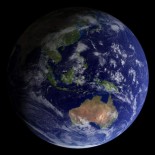Historical geography of global religion in 90 seconds
Interesting site –
http://www.mapsofwar.com/ind/history-of-religion.html
See also:
Imperial history of the Middle East in 90 seconds (condensing 5000 years of history)
and
American Leadership and War (231 years of history condensed in — you guessed it — 90 seconds)
This third link pits US Democrat against Republican “reign” losses – the Democrat blue line of war casualties is blessedly much shorter than the red until WWII and Vietnam, yet the GOP blue line doesn’t extend commensurate with actual numbers as you’d anticipate when the Iraq and Afghanistan conflicts come up, which would alone double the shown tally of 700 000, so I think its biased. What do you reckon?
I think these sites are quite valuable and well done, excepting my reservations of the partisanship I perceive on the third.
A flash visual history education in less than 5 minutes, rather than being the equivalent of education fast food, is terrific for those of us who have to pack a lot in information-wise, and who love maps. It’s also great to see a longue duree view to help frame and contextualise current events in larger time-perspective.

those sites are really cool. thanks for the links
Thanks for coming by Graeme, I agree, they’re terrific maps.
Another totally illuminating post, Ann. I love history anyway. But to see it animated is a real treat. Now quick – which came first the Hitites empire or the Assyrians? No fair peakin’.
Sure hope there’s gonna be a quiz! He he. I luv lurnin’
I’m not sure if we need to put it on rewind or fast forward!
Good point, Blue Bear! And the shards of the kaleidoscope continue to turn …
Kaleidoscope is the right word. The animation has pretty colors to look at but keep in mind that the real world was a lot more complex than that…you don’t want to forget the Zoroastrians, Jains, Pagans, and Mithrans who may be hindus who took Zoroastrian beliefs to the pagans, etc. etc. I’m from South India where there hasn’t been a mono-religion since 500 BC, and I know it is the most “sheltered” part of India.
Thanks DMR, the condensed time frame certainly mean that breadth is (necessarily) forsaken for depth and it submerges the kaleidoscopic complexity of the human scale as you note. Nevertheless, as Servant says, maps like these really do their part in promoting awareness and learning. Btw, I’m very interested in South Indian culture, in all its complexities. I’ve only been to Tamil Nadu and Kerala so far but I’d love to visit again.